- Home
- Orhan Pamuk
Other Colors Page 28
Other Colors Read online
Page 28
This is how my story came to take on—either through my difficulties with its internal logic or the laziness of my imagination—an entirely new shape. I was of course familiar with the tales of twins in E.T.A. Hoffmann, who was always dissatisfied with himself, and who, because he’d wished to be a musician, imitated Mozart, going so far as to add Mozart’s name to his own; I knew the bloodcurdling stories of Edgar Allan Poe and Dostoyevsky’s The Other, to whom I paid homage in the legend of the epileptic pope in the Slavic villages. When I was in middle school, our biology teacher boasted he could always tell the two ugly identical twins in the class apart, but in oral exams, they would switch places, unbeknownst to him. At first, when I saw Charlie Chaplin imitations in The Great Dictator, I liked them, but later I did not. When I was little, I was in awe of the comic-book character Onethousandandonefaces, who was forever changing identities: If he changed places with me, what would he do? I wondered. If he changed places with an amateur psychologist, he might say, “Actually, what all writers want is to become someone else.” Robert Louis Stevenson put even more of himself into Dr. Jekyll and Mr. Hyde than Hoffmann put into his fairy tales: an ordinary citizen by day and by night a writer! Whenever my own identical twin changed places with me, he would try to remind my readers of my debt to doubles.
I am still not sure if it was the Italian slave or the Ottoman master who wrote the manuscript of The White Castle. When writing it, I decided to use the closeness I felt to Faruk, the historian in The Silent House, to safeguard against certain technical problems. Cervantes, whom I salute in the first and last sections of the book, must have suffered such anxieties at some point; to write Don Quixote he made use of a manuscript by the Arab historian Seyyit Hamit bin Engeli, and to make it his own he filled the gaps with word games. Those familiar with The Silent House will remember that after Faruk found the manuscript in the Gebze archives and undertook to render it in the language of the citizenry, he seems to have added passages from other books. At this point, I should like to point out to readers who imagine that I, like Faruk, worked in the archives, rummaging among the shelves of dusty manuscripts, that I am unwilling to take responsibility for Faruk’s actions. What I did was use a few details that Faruk discovered. For these I borrowed a method from Stendhal’s Three Italian Chronicles, which I read while writing my first historical books: I arranged for the discovery of an old manuscript by sprinkling the details into the foreword I wrote for Faruk. This perhaps opened the way for my using Faruk again (as his grandfather Selahattin Bey would) in another, subsequent, historical novel, while also sparing the reader the hazards of a costume ball arriving out of nowhere—always historical fiction’s greatest danger point.
I chose to set my novel in the mid-seventeenth century, not just because it was historically convenient and a lively and colorful time but because this would allow my characters to make use of the writings of Naima and Evliya Çelebi; still, various little fragments gleaned from travel books from preceding and succeeding centuries also seeped into the novel. To make my hopeful and well-meaning Italian into my master’s slave (these were the days of quack medicine and ships that took captives), I took a leaf from Cervantes and made use of a book presented to Philip II by a nameless Spaniard who had also been a captive of the Turks. The memoirs of Baron W. Wratislaw, a galley slave in Ottoman ships at the time of Cervantes, served as a model for my own slave’s incarceration. I also made use of certain passages from the letters of a Spanish traveler who visited Istanbul forty years before them, and who described the city succumbing to plague (when even a normal boil would spark terror) and the deportation of Christians to the Princes Islands. Other details that figure in the book come not from the period in which it is set but from accounts of witnesses from other times: Istanbul’s scenic views, firework displays, and nighttime amusements (Antoine Galland, Lady Montagu, Baron de Tott); the sultan’s beloved lions and his lion zoo (Ahmet Refik); the Ottoman army’s Polish campaign (Ahmet Ağa’s Diary of the Siege of Vienna); some of the child sultan’s dreams (a book called Strange Events from Our History, made from the same stuff as the Reşat Ekrem Koçu book that I read in my grandmother’s library); Istanbul’s packs of wild dogs; precautions against the plague (Helmuth K. B. Von Moltke’s Turkish letters); and the White Castle, from which I took my novel’s name (in Tadeutz Trevanian’s Journeys in Transylvania, illustrated with engravings, he mentions the chronicle of the castle and also a novel by a French author about a European changing places with a barbarian).
Evliya Çelebi also wrote a book about the lunatic asylum in the complex connected to the Beyazit Mosque in Edirne (the one who heard the mysterious music played for the patients was, of course, Evliya Çelebi), but I could only shiver in the gloom when my wife and I visited this beautiful monument on a muddy, cloudy, featureless spring morning. Also the sultan’s beloved stork. Some of the dreams that Mehmet the Hunter sees and that my hero interprets are actually my own dreams (the dark men carrying sacks). Like my Italian hero, I once had a new outfit that my brother got to wear, because his was torn to pieces, but it wasn’t red, as in the book (it was navy and white). On cold winter mornings, returning home from an excursion, if our mother bought us something to eat (not helva but bitter almond shortcake), she would say the same thing as the Master’s mother: “Let’s eat these before anyone sees us.” The book’s redheaded dwarf bears no relation to the classic from our childhood, The Redheaded Child, or any dwarf in any of my novels past and future; I saw him in 1972 in the Beşiktaş market. For a time I thought that the Master’s long experiments toward a clock that might show the times of prayer was a daydream of my own, dating back to my bachelor years, but I was wrong. It turns out that many people have been interested in this idea, which makes it all the more surprising that such a clock still does not exist; someone told me that the Japanese have made a wristwatch along these lines, but I’ve never seen it.
Perhaps its time has come. That the East-West divide is one of the ideas cultures have used and will continue to use to classify and differentiate humanity is not, however, the subject of The White Castle. This divide is an illusion, but if it had not been made and remade with great enthusiasm over many centuries, my book would have lost much of the background color sustaining it. That the plague might be used as a litmus test for the East-West divide is another old idea. Somewhere in his memoirs, Baron de Tott says, “The plague merely kills a Turk, while a Frank suffers the greater torment of fearing death!” This sort of observation is not, in my view, a piece of nonsense or even a fragment of science; it is one of many little details I used to create the texture of the book. Perhaps they will help the writer remember how happy he was when writing and researching his book.
CHAPTER FIFTY-EIGHT
The Black Book: Ten Years On
My most powerful memories of The Black Book are of the last days I spent working on it. In 1988, after three years of work, when the end was in sight, I shut myself up for a brief time in an empty apartment at the top of a newly constructed seventeen-story apartment building in Erenköy, where I did nothing but write. My wife was in America, no one knew my phone number so the phone never rang, and all of the others who might have pulled me away from Galip’s adventures and the imaginary world in which I had sunk so deep were far away. I saw no one except the two relatives who lived in the same apartment building and kindly asked me over for supper now and again; as is always the case when I am so deeply and obsessively inside a book to my delight, I lost touch with the outside world.
But as I sat in my corner, I could not bring The Black Book to a close. It would take me almost five years to write it. As I sat in that distant place, working on this book that refused to end, a strange and miserable fear began to taint the joy of my writing, and my solitude, a fear that slowly came to resemble that suffered by the hero, Galip. As he searches fruitlessly for his wife all over Istanbul, he comes across all manner of surprise but cannot take real pleasure in the underground tunnels, the Türkan Şoray look
-alikes, or all the old columns he peruses, so great is his grief at his loss. Likewise, as the writing progressed and the book grew broader, the pleasure of writing it grew deeper, but I was unable to take pleasure in that fact because of the obsessive goal that eluded me. I was mournfully alone, just like Galip. I neglected daily shaving and paid no attention to my clothes. I remember wandering like a ghost through the back streets of Erenköy of an evening, clutching a mangled plastic bag and wearing a cap, a raincoat that was missing a few buttons, and ancient gym shoes with rotting soles. I’d go into any old restaurant or buffet and wolf down my food, casting hostile looks about me. My father came to take me out to eat once a fortnight, and I remember his telling me how worried he was about the dirt and disorder of my apartment, my air of ruination, and this book that I could not seem to finish.
I felt all alone, like Galip—perhaps I felt like this so I could carry the emotion into the book—but he was subsumed by melancholy, while my isolation was in anger. Because they wouldn’t understand this book that was becoming steadily stranger, because they would measure it against traditional novels, because it was hard to understand, because they would point to the book’s more obscure parts to prove it a failure, and also, perhaps, because I was never going to finish it; I’d written the wrong book. The Black Book proved to me that the measure of a book is not its ability to solve the literary and structural problems set forth in it but the greatness and importance of the questions the author is addressing and the degree to which he gives himself over to this task, however hopeless. As difficult as it is to write good books, it is just as difficult to concoct subjects to which a writer can devote all his creative energy, everything he has in him, for the rest of his life.
Books like these, books to which you can devote your entire life—like life itself—they take you where they want you to go, but very slowly. This new place, this foreign country, is no doubt made up of our past, our memories, and our dreams; during the days I was writing The Black Book, these blended with the fears and uncertainties, the harbingers of death and solitude that came to haunt me as I wrote through the night until morning, smoking cigarette after cigarette. This is your first intimation of what lies beyond; it is also your first consolation. Once again your helpless obstinacy has saved you, not your clever artistry. Despite the stubborn patience that I trusted so much more than I did the thing they call skill, there were times when I feared that the book was going nowhere, that all these pages I had written would lead neither me nor the reader anywhere but a state of confusion. This would plunge me into despair. As I was writing The Black Book, it seemed as if I was wavering between a deep personal quest for meaning, a superficial aimlessness, and the sort of obscurity that can only come from the desire to write something great. During my time alone, what preoccupied me most were the worst-case scenarios that these tensions suggested: I might have spent five years of my life on a book that had no worth; I might have failed. I now think that for people like me such fears are therapeutic, in that such individuals can write only by experiencing disquiet and tension.
The original idea for The Black Book was something set in the very late seventies, evoking the poetry of the streets of my childhood and embracing the anarchy of Istanbul, past and present. In a journal I began to keep in 1979, I wrote about a thirty-five-year-old intellectual who flees from his home, of his experiences over a long weekend, of a football match that is being played during the same weekend and that turns into a national catastrophe, of power outages and Istanbul streets, of the atmosphere of Brueghel’s paintings (snow) as well as Bosch’s (devils), of the Mesnevi, of the Shahname, and of the Thousand and One Nights.
When these first thoughts were taking shape in my mind, I had not yet published Cevdet Bey and Sons, but I was thinking of an artist as the hero and I had even thought up a title, “The Shattered Miniature.” Istanbul’s endless noise and confusion, its intellectuals, the glittering parties they attended, family meetings, the funerals, beauty pageants, and football matches—I was imagining all these things at once, and as always I took more pleasure in my dreams and plans for this novel called The Black Book that I would write in the future than I did in the books I was writing at the time (a never-finished political novel, The Silent House, and The White Castle).
At around the same time, one day in particular influenced the shape and concept that the book would ultimately assume. In 1982, two years after the coup and just before the new constitution that severely limited freedom was being harshly imposed without a chance for public debate, my cousin rang to say that a Swiss television team had come to Istanbul to do a program on the new constitution and were looking for intellectuals willing to criticize it on camera: Did I know anyone with the courage to do so? I spent the next two days combing the city—its universities and its encyclopedia publishers, its advertising agencies and its newsrooms, going from house to house, trying to find intellectuals who might be willing to speak. Because telephone calls were—then as now—subject to continuous surveillance, I was obliged to visit each and every candidate, each and every one of whom turned me down. Because the persecution of intellectuals by the state and the army had reached Soviet proportions, I felt that the journalists, writers, and other decent people who turned me down were right to do so, and so I felt guilty for having forced them into a moral quandary. The foreign TV team, which was waiting in a room at the Pera Palas, had even told me they could backlight anyone who agreed to speak so all faces would be obscured in shadow. In the end they said that if there were no intellectuals willing to speak to them, they would interview me instead (as in The Black Book, when Galip, unable to find Celal, speaks in his stead), but I had no faith in myself and no courage.
There are so many fragments of memory that made their way into The Black Book in slightly altered form that it would be presumptuous to list them. But I would still like it to be known that I was at pains to replicate Nişantaşi as I knew it in those days, that I paid attention to the names of the streets, the avenues, their atmosphere. That Alaaddin is a real person who has a real shop next door to the police station is something many people know from the newspaper interviews he went on to give after the Turkish publication of the novel. I have always been glad to see the clippings that Alaaddin displayed on his windows and in corners of his shop, just as I have enjoyed introducing him to the translators (“Alaaddin, this is Vera; she’s going to make you famous in Russia!”) and the fact that there are curious readers who come from all over the world looking for him. As for those who solved the acrostic and found that there was a building called the Pamuk Apartments where the Heart of the City Apartments were located in the novel, they will also have guessed that I used many other details from my life in the same way, from the moaning of the lift to the smell of the stairwell and the domestic quarrels of that Westernized family. After the book was published, my relatives, taking issue with the novel down to its last sentence, continued the same domestic disputes as a sort of postmodern joke, first taking one another to court over property matters and then gathering together for holiday meals.
Because it is set in the places where I spent my childhood and because it tells the story of a man about my age, I am of course asked frequently how much of me there is in Galip. My life’s minor details—shopping trips, looking at Alaaddin’s shop from the window, talking to the real Kamer Hanim, spending Saturday nights alone, walking the streets at night—perhaps resemble Galip’s. But Galip’s essential loneliness, the melancholy that has seeped into him like an illness, and the mournful darkness of his life—I am glad to say that my wounds are not so deep. I am jealous of Galip’s ability to bear his resignation, his gravity, and his pain, just as I admire his quiet affirmation of life in spite of all he must endure. It was because I am not as strong as Galip that I became a writer.
I began The Black Book in 1985 in my little dorm room at the University of Iowa. My window looked out into the woods, where the beech trees radiated an autumnal red. Then I went to join my wi
fe in student housing at Columbia University, where I continued the book on a desk that I bought in Harlem and placed next to a window overlooking Morningside Park. Whenever I raised my eyes, I would gaze at the broad path running along the edge of the park where squirrels scampered and drug dealers robbed passersby (myself included) and killed one another before my eyes, and where once Dustin Hoffman was to be seen waiting to be called to the set of Ishtar, a film that would famously fail. After that I worked in a room measuring six feet by four feet in the Columbia University library, which is home to four million books. My room, which was always blue with cigarette smoke, was at the very top of the building and looked out over the central campus where hundreds of students were constantly strolling back and forth. I continued work on the book in the penthouse flat on Teşvikiye Caddesi that inspired Celal’s secret office (the radiators and the parquet floors moaned and creaked in the same way) and on Heybeliada, in a summerhouse that was later sold (from my window I could see the forest and the darkness of the sea beyond). From the Erenköy apartment, where I wrote the last pages, I could see tens of thousands of windows, and on the nights I’d spend so joyfully writing and smoking pack after pack, I would watch the blue light of television disappear from the windows one by one. Thinking back on those days, when my ears were attuned to Istanbul’s silence (and the distant packs of barking dogs, the swishing trees, the police sirens, the rubbish vans, and the drunks); when I could smoke as many cigarettes as I pleased, and write, I can see how very happy I was then—even as I lived through the pleasures and fears of the dizzying mental fatigue that would descend on me toward morning, when I lost my way inside the mysterious core of the novel, which was at times closed even to me.

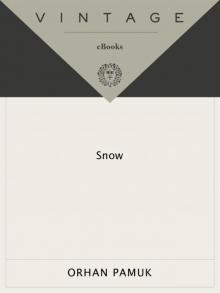 Snow
Snow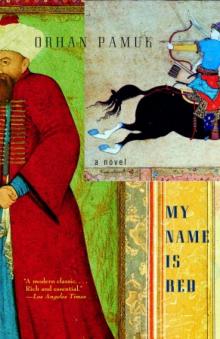 My Name is Red
My Name is Red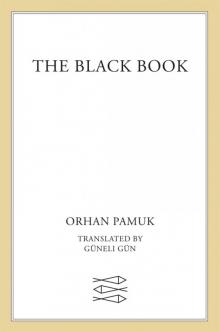 The Black Book
The Black Book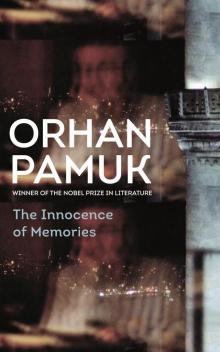 The Innocence of Memories
The Innocence of Memories The White Castle
The White Castle Other Colors
Other Colors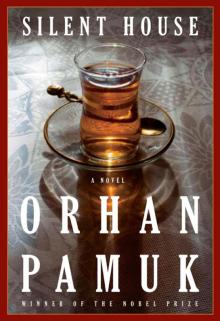 Silent House
Silent House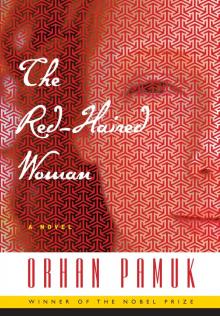 The Red-Haired Woman
The Red-Haired Woman The Museum of Innocence
The Museum of Innocence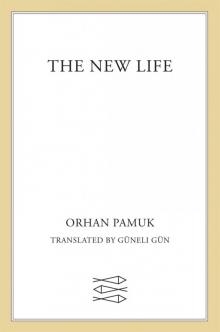 The New Life
The New Life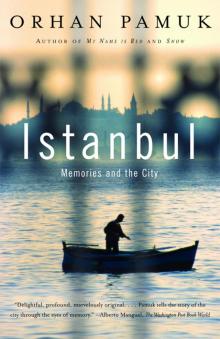 Istanbul
Istanbul